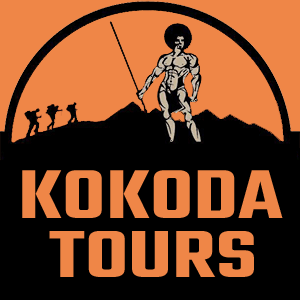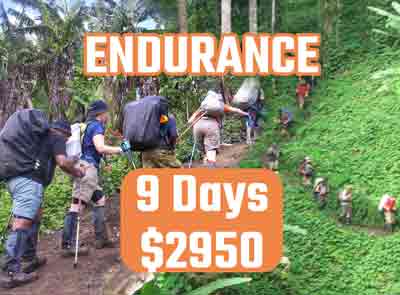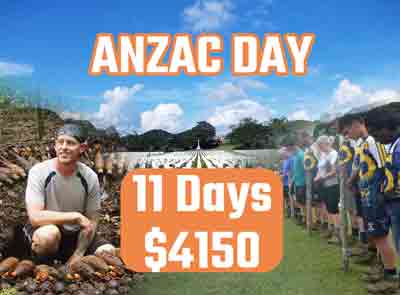Papua New Guinea – Trekking Kokoda: Conditions on the Kokoda Track for Trekkers & Past Diggers
Introduction
Embarking on the Kokoda Track is not merely a hike; it’s a journey through history, tracing the footsteps of Australian forces during the gruelling Kokoda Campaign of 1942. As you prepare for this challenging trek, understanding the conditions along the Kokoda Track is vital for a safe and enriching experience.
The Historical Context
Kokoda Campaign: 1942
In August 1942, Australian troops found themselves in a fierce battle against Japanese forces along the Kokoda Track. This historic trail, weaving through the Owen Stanley Range in Papua New Guinea, played a pivotal role in the defence of Port Moresby.
Significant Points
The trek covers pivotal locations like Isurava, Buna, Owers’ Corner, Templeton’s Crossing, and the village of Kokoda. These sites bear witness to the sacrifices of Australian forces, facing difficult conditions, muddy tracks, and the relentless jungle during the Kokoda Campaign.
Terrain and Weather Conditions
Dense Jungle and Challenging Terrain
The Kokoda Track cuts through dense jungle, offering trekkers a glimpse into the challenging conditions faced by Australian troops. Sections of the track are still rugged, demanding endurance and determination.
Wet Season Challenges
The Kokoda Track experiences a monsoonal climate, with heavy rain during the wet season. Trekkers should be prepared for muddy tracks, slippery paths, and unpredictable weather conditions. The temperatures can vary, ranging from scorching heat to cooler, damp conditions.
Malaria and Dysentery Risks
During the Second World War, Australian soldiers battled not only Japanese forces but also tropical diseases like malaria and dysentery. Trekkers should take necessary precautions and be aware of the health risks associated with the region.
Practical Considerations
Trek Length and Duration
The length of the Kokoda Track is approximately 96 kilometres, a challenging distance that typically takes 7 to 10 days to cover. Trekkers should be physically prepared for long hours of walking, often across uneven terrain.
Fuzzy Wuzzy Angels: Local Support
The Fuzzy Wuzzy Angels, the indigenous Papuan people, played a crucial role in supporting Australian forces during the campaign. Similarly, local guides and porters contribute significantly to modern trekking adventures, offering support and insights.
Essential Supplies
Carrying food and ammunition across the trail was a logistical challenge during the wartime Kokoda Campaign. Today, trekkers must carefully plan and pack essentials, considering the absence of facilities along the track.
Tips for a Successful Kokoda Adventure
Preparation and Training
The kokoda track has experienced many post war deaths. You will need to prepare physically and mentally for one of the toughest treks you’ll ever undertake. Training should include endurance exercises, as well as mental resilience to face the challenges posed by the Kokoda Track.
Respect for History and Culture
Show respect for the historical significance of the Kokoda Track and the local cultures. Engage with the stories of the Aboriginal and Torres Strait Islander peoples, whose lands you traverse.
Environmental Conservation
Preserve the beauty of this natural wonder. Stay on designated tracks, adhere to waste disposal guidelines, and minimize your impact on the delicate ecosystem.
Conclusion
Embarking on a Kokoda Track adventure is a profound experience that goes beyond the physical challenges of trekking. It’s a journey through history, connecting you to the heroic efforts of Australian forces during the Kokoda Campaign. Be prepared, stay respectful, and embrace the spirit of endurance that defines the Kokoda Track.




